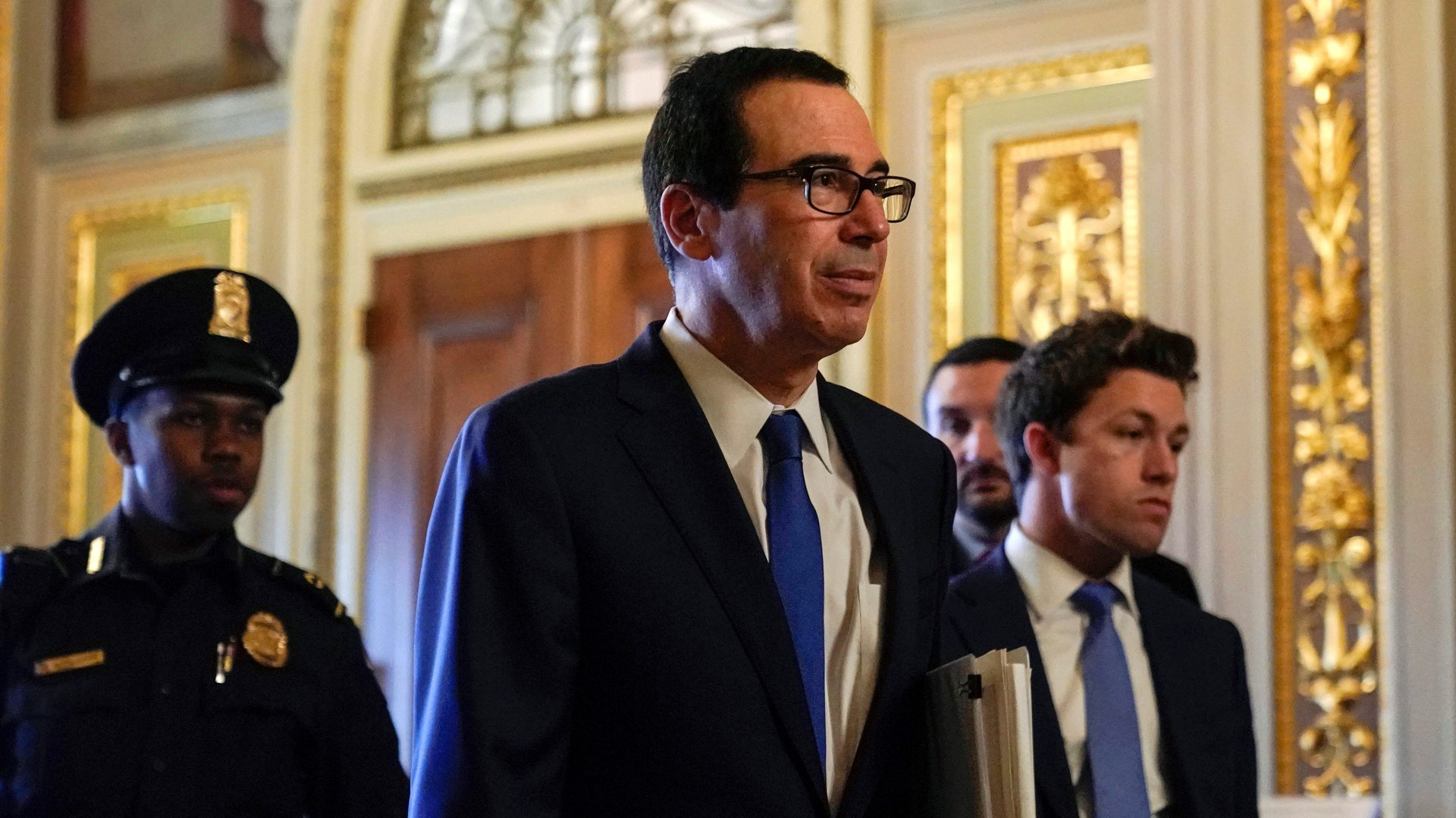The US is preparing $2 trillion to stimulate its economy. Will it be enough?
The White House and the Senate have agreed on a $2 trillion stimulus package to bolster the US economy, which is being ravaged by widespread business closures to contain the spread of the coronavirus. The measures are more than twice the size of the stimulus injection after the financial crisis in 2008.


The White House and the Senate have agreed on a $2 trillion stimulus package to bolster the US economy, which is being ravaged by widespread business closures to contain the spread of the coronavirus. The measures are more than twice the size of the stimulus injection after the financial crisis in 2008.
Stock markets, at least briefly, lurched higher on signs that the stimulus deal, worth about 10% of the US gross domestic product, would pass. Governments around the world are gearing up to spend and lend at least $4.4 trillion—a number that’s still growing—as Germany and the UK prepare measures amounting to 15% or more of GDP.
Economists including Harvard professor Kenneth Rogoff have been urging politicians to implement massive stimulus packages to counteract the unprecedented disruption from the Covid-19 pandemic. While the magnitude of the measures discussed in Washington is unquestionably vast, even more money may be needed. Neil Dutta, head of US economics at Renaissance Macro Economics, thinks the Trump administration may need to dish out as much as $3 trillion.
“The losses are cascading and every week that goes by is another massive hit,” Dutta says. “There’s no science to it, but the more open-ended the commitment is the better.”
- Direct payments of $1,200 for most adults and $500 for each child
- Unemployment insurance will be extended by four months, with wider eligibility and increased benefits
- $500 billion to back loans for companies, industries (including the airline sector), and states
- $367 billion for small businesses
- $150 billion of stimulus funds for state and local governments
- $130 billion for healthcare providers and hospitals
The looming global recession is different from any in recent memory. Whereas downturns typically reflect pessimism and a loss of confidence among investors and businesses, this one is being self-induced as governments deliberately turn off their economies. Economists at JPMorgan say the depth of the recession will be unprecedented, with the US economy contracting 14% next quarter and GDP in the euro area declining by 22%. They say the global GDP will shrink 1.1% this year, only the second time it has contracted since World War II.
How the global economy emerges depends on the interaction between efforts to contain the virus and measures that preserve industries that will undergo financial deep freeze. The idea is to avoid widespread defaults and job losses so that the economy can get back on its feet sooner.
As the coronavirus pandemic worsens, one of the many difficulties is supporting thousands of small business that provide millions of jobs. In the US, these smaller enterprises employ nearly 50% of the workforce, according to Karen Mills, who ran the Small Business Administration during the Obama presidency. Keeping them solvent increases the odds of a faster recovery, and Mills recommends interest-free loans and other measures to keep them afloat.
In the meantime, opinions are mixed on whether the rebound will be a sharp “V-shaped” recovery, or something that’s longer, more protracted, and painful.
Jason Furman, the Harvard professor and former Obama economic advisor, told Business Insider that he wouldn’t count on a quick turnaround. The massive stimulus the US is about to receive gives it a better chance of a fast recovery, but it still takes time for bankrupt businesses to be reorganized, and for fired workers to get employment again. Economist Gary Shilling told Bloomberg Radio that this disruption is having a “decided” impact on confidence for consumers and businesses in the US. Instead of a V-shape bounce back, he expects an “endless L”: it will still take a long time to restore delicate supply chains, he said.
Others are more optimistic. Economists at JPMorgan think there will be a strong snapback if activity is able to get up and going by the middle of 2020. Dutta at Renaissance Macro said the economic data in March and April will be ugly, but there may be economic growth again by June.
“There’s going to be mechanical bounce in activity just as things turn on,” he said. “That will give you a kick going into the third quarter.”